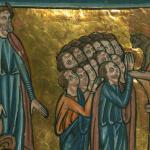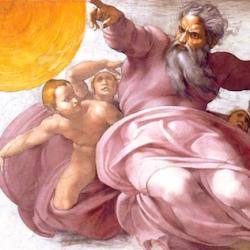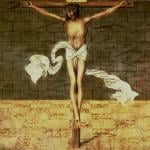In his recently published Lewis on the Christian Life, Joe Rigney devotes a few pages to expounding Lewis’s understanding of the relation between abstract theological statements and the images of Scripture. He endorses the abstractions as a caution against false inferences that might be drawn from the images, but he warns that the abstractions aren’t to be taken as “literal” truth or as data of revelation.
Thus, for instance, Rigney presents two theological statements:
“A. When God is angry, smoke goes up from his nostrils (Ps. 18:8).
B. God is absolute Being and all human characteristics are inapplicable to him” (55).
Lewis doesn’t think that B is literal and A a “poetical decoration or . . . a concession to the ‘primitive mind of the ancient Jews.” Rather, neither can be taken literally. And A at least has the advantage of being revealed:
“B can make no claim to be a revelation: we have made it. A does make this claim. . . . To prefer B is to think that the symbol we have made is better than the symbol He has made. I think we are right to use B as a corrective whenever A, taken literally, threatens to become absurd: but we must instantly plunge back into A. Only God Himself knows in what sense He is ‘like’ a father or king, capable of love and anger. But since He has given us that picture of Himself we may be sure that it is more importantly ‘like’ than any other concept we might try to substitute for it” (quoted 56, fn 16).
Lewis recognizes that “Scripture doesn’t take the slightest pains to guard the doctrine of Divine Impassibility. We are constantly presented as exciting the Divine wrath or pit – even as ‘grieving’ God. I know this language is analogical. But when we say that, we must not smuggle in the idea that we can throw the analogy away and, as it were, get behind it to a purely literal truth. All we can really substitute for the analogical expression is some theological abstraction. And the abstraction’s value is almost entirely negative. It warns us against drawing absurd consequences from the analogical expression by prosaic extrapolations. By itself, the abstraction ‘impassible’ can get us nowhere. It might even suggest something far more misleading than the most naif Old Testament picture of a stormily emotional Jehovah. Either something inert, or something which was ‘Pure Act’ in such a sense that it could take no account of events within the universe it had created” (quoted 56-7).
Rigney cites Lewis’s two rules for interpreting images: “1) Never take the images literally. 2) When the purport of the images – what they say to our fear and hope and will and affections – seems to conflict with the theological abstractions, trust the purport of the images every time. For our abstract thinking is itself a tissue of analogies: a continual modeling of spiritual reality in legal or chemical or mechanical terms. Are these likely to be more adequate than the sensuous, organic, and personal images of Scripture – light and darkness, river and well, seed and harvest, master and servant, hen and chickens, father and child? The footprints of the Divine are more visible in that rich soil than across rocks or slag-heaps. Hence what they now call ‘demythologizing’ Christianity can easily be ‘re-mythologizing’ it – and substituting a poorer mythology for a richer” (quoted 58; emphasis added).
If there is one motto I’d like to convince theologians to adopt, it’s this: “Trust the purport of the images every time.”












